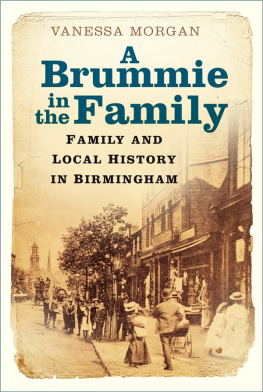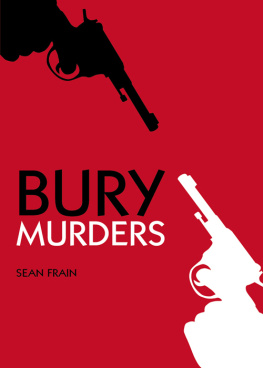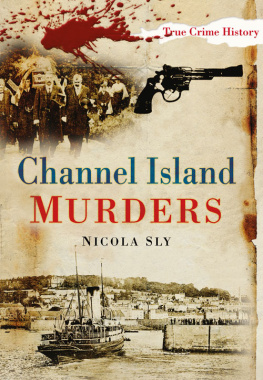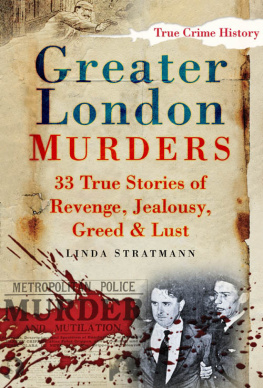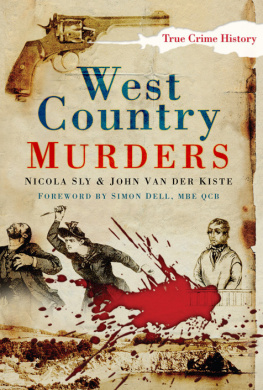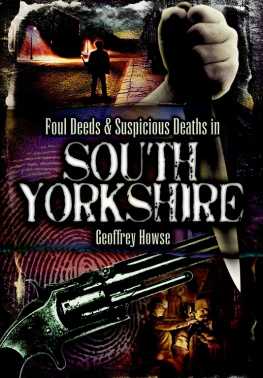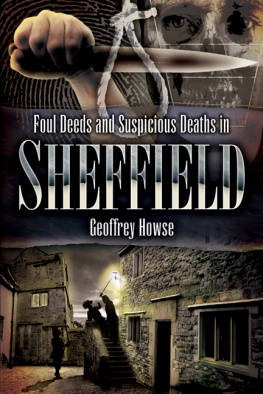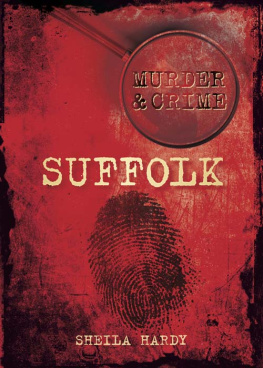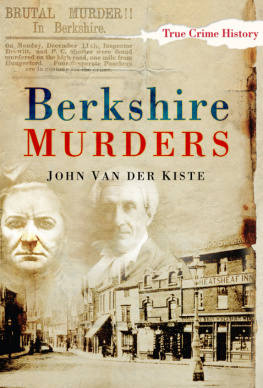

Birmingham Town Hall, c. 1900. (Authors collection)
Research for this book was mainly undertaken using the local newspapers of the period. These included the Birmingham Daily Post , Birmingham Mail , Birmingham Weekly Post , and Birmingham Aris Gazette , all of which are held in the Birmingham Archives and Heritage Centre in Birmingham Library.
The Times Digital Archive also provided valuable help, showing the dates of these various crimes in order to pinpoint them in the local newspapers.
The census records and parish registers, also held in the Archives and Heritage Centre in Birmingham Library, assisted greatly in detailing specific addresses.
C.C.H. Moriartys book Birmingham City Police Centenary , Monday, 20 November 1939, was of great help in compiling the history of Birminghams criminal and judicial history.
Finally, without the help of the Midland Railway Society, I may never have discovered exactly where Edgbaston railway station was!

Birmingham Post Office, c. 1900. (Authors collection)
CONTENTS
Case One |
Case Two |
Case Three |
Case Four |
Case Five |
Case Six |
Case Seven |
Case Eight |
Case Nine |
Case Ten |
Case Eleven |
Case Twelve |
Case Thirteen |
Case Fourteen |
Case Fifteen |
Case Sixteen |
Case Seventeen |
Case Eighteen |
Case Nineteen |
Case Twenty |
Case Twenty-one |
Case Twenty-two |
It is hard to imagine the large, sprawling city of Birmingham as once being a small, manorial parish. But before the Industrial Revolution changed the face of Britain this was certainly the case.
The town was run by an ancient body known as the Court Leet. They consisted of a High Bailiff, a Low Bailiff and the Court Leet Jury, all local men of some standing. Every year they would appoint a Headborough and two constables. The Headborough, also known as the Prison Keeper, was in charge of the Public Office and was assisted by half-a-dozen men known as thief-takers. The constables job was to keep law and order.
As the town grew, the old manorial system became out-dated and the Improvement Acts and Street Acts of 1769 and 1773 gave limited control to a Board of Street Commissioners. It was their responsibility to keep the streets safe and they appointed street keepers and nightwatchmen to patrol the streets day and night. These men were provided with a uniform and equipment and were instructed to provide protection for people and property, and to also deal with traffic problems and obstructions.
Another body of law enforcers were the Justices of the Peace and the magistrates. They carried out their duties at the Public Office in Moor Street and in times of trouble would enrol special constables to assist the keepers and watchmen.
The old jailhouse was in Peck Lane, where New Street railway station now stands, but in 1806 a new gaol was built in Moor Street, next to the Public Office. This is now the site of Moor Street station.
By 1839 there were thirty street keepers and 180 nightwatchmen, but in the summer of this year the Chartist Riots took place. A hundred special constables were sworn in to try to supress the riots but they couldnt cope and re-enforcements from the Metropolitan Police in London were brought to help. Following this, an Act of Parliament was passed giving Birmingham permission to set up its own police force.
The last Headborough and constables were appointed on 25 October 1839. They were Mr George Redfern, who had been Headborough since 1811, William Corbett of New Street and Thomas Weston of High Street. Their appointment was short-lived as their positions were abolished on 20 November 1839.

George Glossop listed on the 1851 census.
(HO107/2054/31/3. Held in Birmingham Archives and Heritage)
A few months earlier, on 1 September 1839, Francis Burgess had been appointed as the first Police Commissioner for Birmingham. He was a barrister but had been in the 54 th Foot Regiment from 1812 to 1817, and had been a captain at the Battle of Waterloo. He rented a house in Union Street for himself and his family and also established his office there, but moved to Waterloo Street in 1840.
It was Burgess job to recruit a sufficient number of suitable men as police constables, and the local newspapers on 3 October 1839 printed an appeal for young men not over 36 or under 5 8, able to read and write and produce testimonials of exceptional character. By 30 November 1839, 260 men had been recruited following examinations by a police surgeon and an inspector from the Metropolitan Police. They were paid 17 s a week and given a uniform. One shilling was deducted if lodgings had to be found for them. Members of the Metropolitan Police, who had remained in the town following the riots, left on 20 November and reported to the Home Office that the men cut a very good figure and seem to have made a good impression.
On 25 November magistrates arranged to sit daily from that day onwards at 10 a.m. at the Public Office, Moor Street, to hear police cases.
Francis Burgess retired in September 1842. He thanked his new force for their excellent conduct and hoped that they would continue to maintain the same high character under the new governing body. This new governing body, known as the Watch Committee, comprised of the mayor along with a selection of aldermen and councillors. Richard A. Stephens was appointed as the first Chief Superintendent. When he retired in 1860, the position was given to George Glossop. George had been one of the original members of the force, having joined as a constable in November 1839.
By 1849, Moor Street Gaol had become too small and so was replaced by Winson Green Prison, built by Daniel R. Hill. It has been altered and re-built many times over the years.

The Council House, built between 1874 and 1879. ( V. Morgan)
Before 1884, criminal cases from Birmingham were tried at Warwick Assizes, but in 1884 Birmingham became an assize town. The first cases were heard at the Council House on Monday 4 August before Baron Huddleston and Mr Justice Wills who were judges on the Midland Circuit. Baron Huddleston said, It was a matter of great congratulations that the calendar was very light. [That] there were no cases of brutal violence. Those tried at the first assizes were John Reardon, a jeweller, for inciting William Fry to steal a quantity of jewellery from the Birmingham Mint, his employers, John Welch, for damaging shop windows and George Jones for offering counterfeit money.
The new Victoria Law Courts in Corporation Street were built to house the assizes in the late 1880s by Birmingham firm, John Bowen & Sons. The foundation stone was laid by Queen Victoria on 23 March 1887 and the courts were opened by the Prince and Princess of Wales on 12 July 1891. The building is now the Magistrates Court.
Next page

